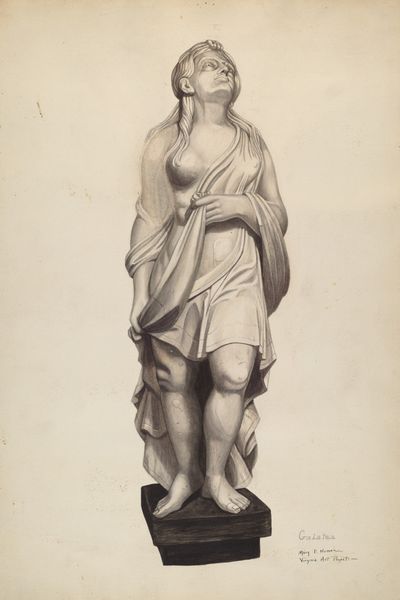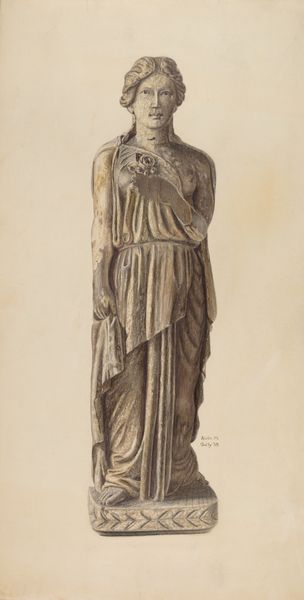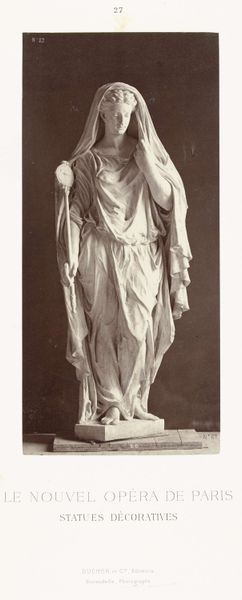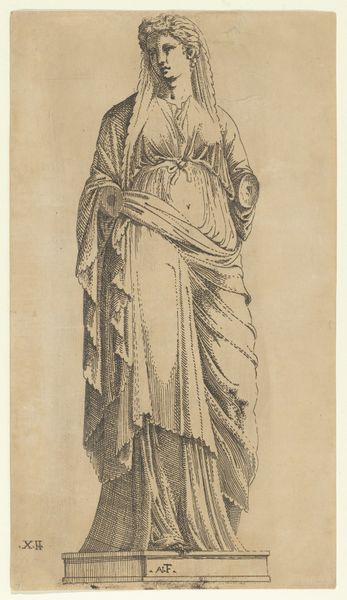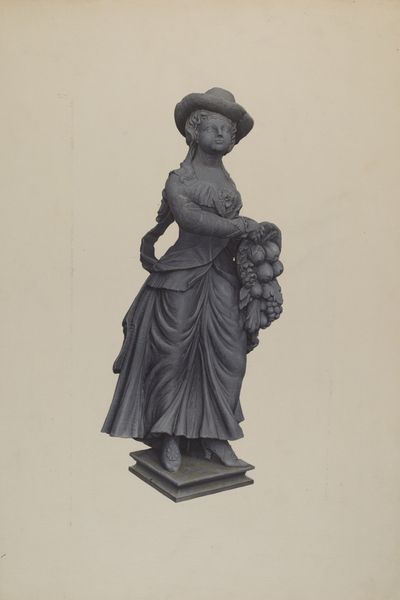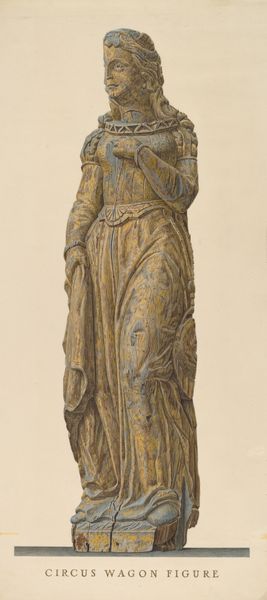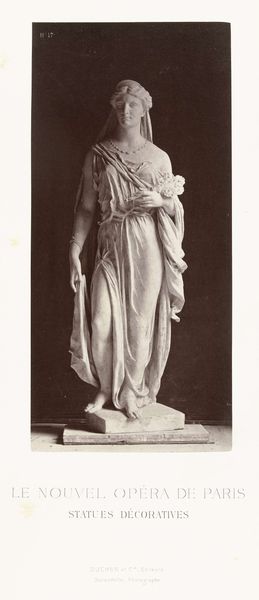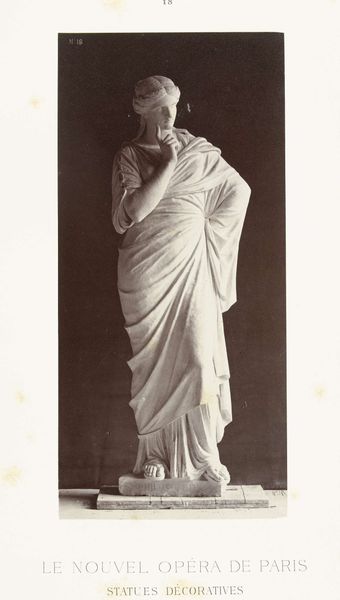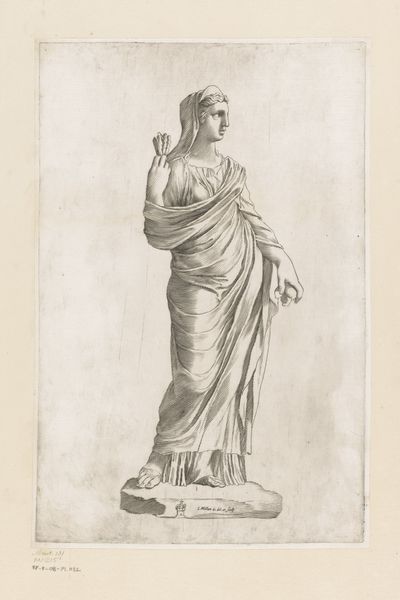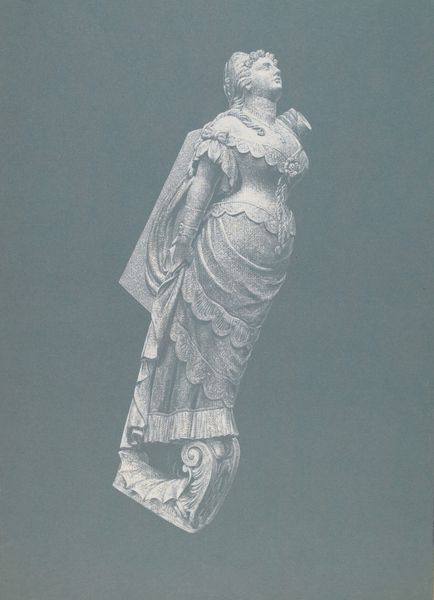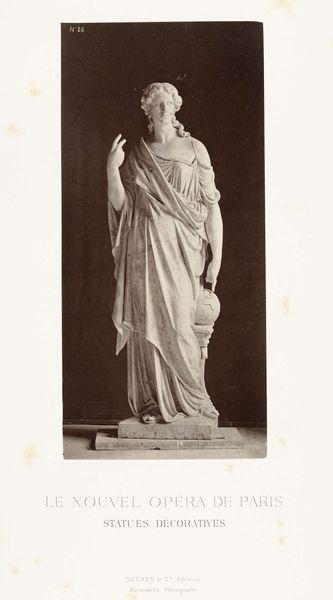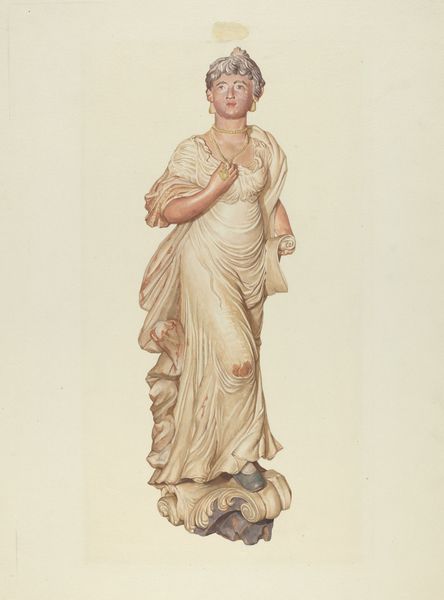
drawing, sculpture, charcoal
#
portrait
#
drawing
#
sculpture
#
charcoal drawing
#
sculptural image
#
figuration
#
sculpture
#
charcoal
#
academic-art
#
charcoal
#
graphite
#
statue
Dimensions: overall: 44.7 x 27.2 cm (17 5/8 x 10 11/16 in.)
Copyright: National Gallery of Art: CC0 1.0
Curator: I'm immediately struck by the solidity, the palpable weight of this... drawing? It feels like sculpture rendered in charcoal. Editor: Precisely. What we’re looking at is "Garden Figure," a work whose creation dates somewhere between 1935 and 1942. Though we don't know the artist, its academic style makes me think about power structures within the artistic field at that time, where institutions validated this approach. Curator: The crossed arms—almost protective, but could it signal a lack of agency? Does she have power, or is it an enforced stillness? I wonder what sort of garden this figure would inhabit. Who commissions such a piece, and to what end? Is it purely decorative or symbolic in some deeper sense? Editor: Those are valid considerations. If we examine the marks more closely, there’s a density to the charcoal application suggesting that labor, time, and access to materials would have been required. There's no visible sketch or armature; each mark appears deliberate in the building up of form. It suggests a classical approach but then is mediated by the accessible material. Curator: Right, accessible compared to carving marble, for instance. But still, the final rendering reads as privileged, evoking notions of classical art without fully engaging in the labor involved. We must consider that even ‘humble’ materials are tied to social contexts, shaped by both intentional artistic choice and socio-economic conditions. I keep considering its potential as garden statuary—what narratives is she part of within the garden space and as a gendered image in the era it was created. Editor: Indeed. And a garden isn't some neutral locale but constructed with purpose reflecting power, leisure and control of resources. How did access to such an icon shift the purpose? Curator: Placing the work into context expands our reading and makes me realize how I cannot disentangle medium from messaging, whether I wish to read it so explicitly or not. Editor: Exactly! Every artistic choice carries baggage – choices related to materials are integral to the meaning, social context, and interpretation.
Comments
No comments
Be the first to comment and join the conversation on the ultimate creative platform.
